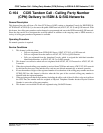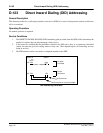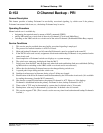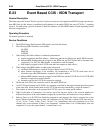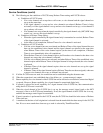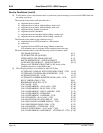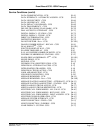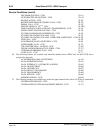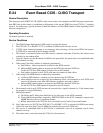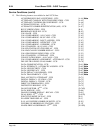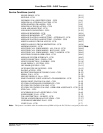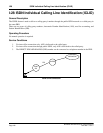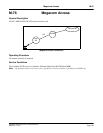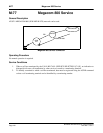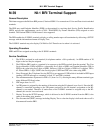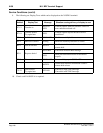
NEAX2400 IPX ISDN Features and Specifications
NDA-24311, Issue 1
Page 179
Event Based CCIS - Q-SIG Transport E-24
E-24 Event Based CCIS - Q-SIG Transport
General Description
This feature provides VIRTUAL TIE LINE for each event such as call origination and MCI message transmission.
Inter-PBX link for this feature is established on B-channels of the private ISDN line using CCIS No. 7 signaling
protocol. For addressing a specific terminal, Called Sub Address or Called DID Number is used depending on the
network configuration.
Operating Procedure
No manual operation is required.
Service Conditions
1. The ISDN Primary Rate Interface (PRI) trunk is used for this feature.
2. The ETS 300 172 or ISO/IEC 11572 is available as ISDN interface for this service.
3. E-CCIS signal channel assignment is not necessary when activating via the private ISDN line because
E-CCIS line is controlled by the D-channel of ISDN.
4. This feature is activated between two PBXs directly connected each other. Therefore, this feature is not
available for the tandem office.
5. Since this feature uses the B-channel for ISDN as the speech line, the speech line is not established when
all B-channels are busy.
6. When using Called Sub Address as addressing information:
a.) Sub Address - Addressing must be available in the ISDN network.
b.) different DID Numbers must be assigned to the ISDN line and the E-CCIS line.
For the E-CCIS line, DID number is required for each D-channel.
c.) Sub Address assigned to the E-CCIS trunk must be common to both offices.
7. When using Called DID Number as addressing information:
a.) a different DID Number is required for each channel of the E-CCIS line.
b.) when multiple routes are assigned for the terminating office, call termination to an E-CCIS trunk
must not be allowed except when DID Number assigned to the trunk is dialed.
c.) different DID Numbers must be assigned to the ISDN line and the E-CCIS line.
For the E-CCIS line, DID Number is required for each D-channel.
8. Each channel used for an E-CCIS line must be controlled by a single D-channel (i.e., Each channel must
be assigned to a single ISDN line.).
9. Billing information
a.) OG billing and IC billing data should be set for each route via the ARTI command.
b.) Trunk identification number assigned by DESTINATION of the AEVT command is output to the
SMDR Record in place of a telephone number.
c.) Billing information on E-CCIS line does not include Access Code or Converted Number.
10. Peg Count service for E-CCIS line (ETS 300 172 or ISO/IEC 11572) is activated for ISDN route setting
Virtual Tie Line data. (Peg Count for ISDN line includes the route for E-CCIS line).
11. This service is established when no E-CCIS line is established or the call is originated even if all the
channels are busy.
12. The release timer is activated when the CCIS call is disconnected.



